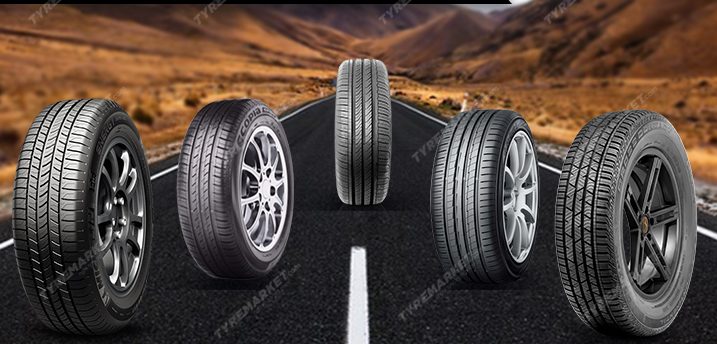Introduction
The automotive industry is at a crossroads. With increasing concerns about climate change and a growing demand for more sustainable transportation options, automakers and consumers alike are seeking ways to reduce their carbon footprint. While electric vehicles (EVs) and hybrid cars have gained popularity as greener options, there’s another, often underappreciated, element that plays a crucial role in enhancing the sustainability of automobiles – energy-efficient tires.
In this blog post, we will delve into the world of energy-efficient tires, exploring their environmental benefits, the technology behind them, and how they are transforming the automotive landscape.
The Environmental Impact of Tires
Most of us understand the environmental implications of fuel consumption and tailpipe emissions, but tires are a frequently overlooked aspect of a vehicle’s impact on the environment. Conventional tires are not only responsible for a significant portion of a vehicle’s energy consumption but also contribute to pollution and waste.
Rolling Resistance: When your car’s tires roll down the road, they create friction with the surface, which is known as rolling resistance. This resistance requires your engine to work harder, consuming more fuel and emitting more CO2. Energy-efficient tires are designed to reduce rolling resistance, making it easier for your vehicle to move and significantly improving fuel efficiency.
Waste and Disposal: Tires wear out over time, and their disposal can pose environmental challenges. Many old tires end up in landfills, where they can take centuries to decompose. However, energy-efficient tires tend to last longer due to their optimized design, reducing the number of tires that need to be discarded.
Raw Materials: The production of conventional tires involves a considerable amount of energy and raw materials, contributing to greenhouse gas emissions. Energy-efficient tires are often designed with sustainability in mind, using recycled or eco-friendly materials that reduce their environmental footprint.
The Technology Behind Energy-Efficient Tires
Now that we understand the importance of energy-efficient tires for the environment, let’s explore the technology that makes them more eco-friendly and energy-efficient.
Low Rolling Resistance Compounds: Energy-efficient tires are engineered with unique rubber compounds that minimize rolling resistance. These compounds are designed to maintain a good grip on the road while requiring less energy to keep the tires in motion. This technology not only enhances fuel efficiency but also extends the lifespan of the tire.
Tread Patterns: The tread pattern of a tire plays a critical role in its performance. Energy-efficient tires often feature innovative tread designs that reduce rolling resistance without compromising safety. These designs optimize contact with the road, enhancing grip and steering control.
Lightweight Construction: Some energy-efficient tires are constructed using lighter materials, such as advanced composites or sustainable materials. A lighter tire means less weight for the vehicle to carry, resulting in improved fuel efficiency.
Aerodynamics: The design of the tire sidewalls and their interaction with the vehicle’s body can impact aerodynamics. Energy-efficient tires are often engineered to reduce drag, which enhances the overall efficiency of the vehicle and lowers fuel consumption.
Environmental Benefits of Energy-Efficient Tires
The advantages of energy-efficient tires are not limited to reduced fuel consumption and extended tire life. They have a more profound impact on our environment and economy:
Reduced Carbon Emissions: Energy-efficient tires significantly decrease rolling resistance, which, in turn, lowers the amount of carbon emissions produced by your vehicle. This reduction in greenhouse gas emissions helps combat climate change and reduce the environmental impact of driving.
Cost Savings: While energy-efficient tires may have a slightly higher upfront cost, the fuel savings they provide over their lifetime often outweigh the initial investment. Plus, their extended lifespan means fewer tire replacements, further reducing costs.
Less Waste: Energy-efficient tires tend to last longer, reducing the number of old tires that end up in landfills. This contributes to a cleaner and more sustainable environment.
Sustainability: Many manufacturers are using sustainable and recycled materials in the production of energy-efficient tires. This not only reduces the environmental impact of tire manufacturing but also supports the circular economy.
The Road Ahead for Energy-Efficient Tires
The adoption of energy-efficient tires is growing, thanks to their numerous benefits and increasing consumer awareness. However, there are still challenges to overcome to make them a standard in the automotive industry.
Consumer Awareness: Many drivers are unaware of the environmental and economic benefits of energy-efficient tires. Educating consumers about these advantages and encouraging their adoption is crucial.
Initial Cost: Energy-efficient tires can be more expensive than conventional ones. While the long-term savings are substantial, convincing cost-conscious consumers to make the initial investment remains a challenge.
Regulatory Support: Governments and regulatory bodies can play a significant role in promoting energy-efficient tires. Implementing policies that encourage their use and providing incentives can accelerate their adoption.
Innovation: Continued research and development are essential to improve the technology behind energy-efficient tires. Advancements in materials, design, and manufacturing processes can make these tires even more eco-friendly and cost-effective.
Conclusion
Energy-efficient tires are a crucial component of the sustainable and eco-friendly automotive landscape. They not only reduce carbon emissions and save money for drivers but also contribute to a cleaner and more sustainable planet. As the automotive industry continues its shift towards sustainability, energy-efficient tires will play a pivotal role in reducing the environmental impact of our daily transportation.
By choosing energy-efficient tires, you not only drive a more eco-friendly vehicle but also become a part of the solution to combat climate change and reduce your carbon footprint. So, the next time you need to replace your tires, consider the environmental and economic benefits of energy-efficient options. It’s a small change that can make a significant difference in the quest for a greener, more sustainable future on the road.


